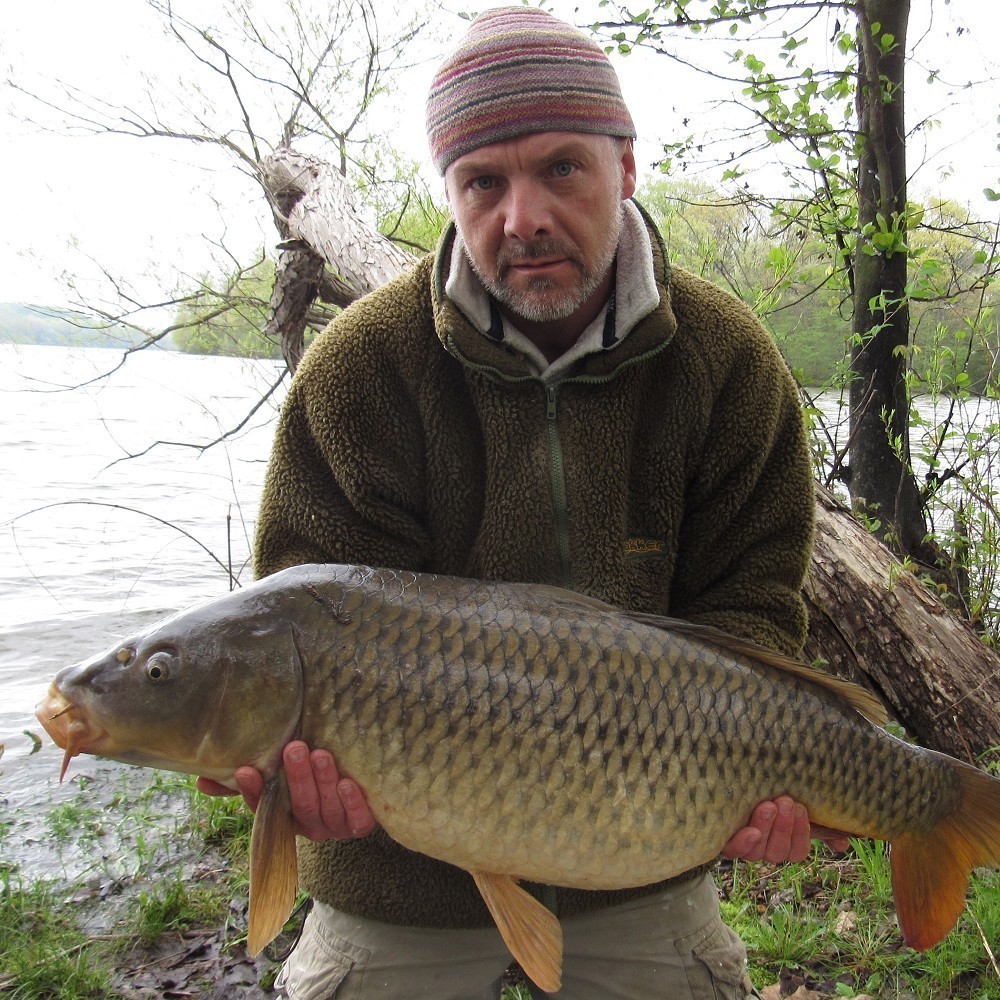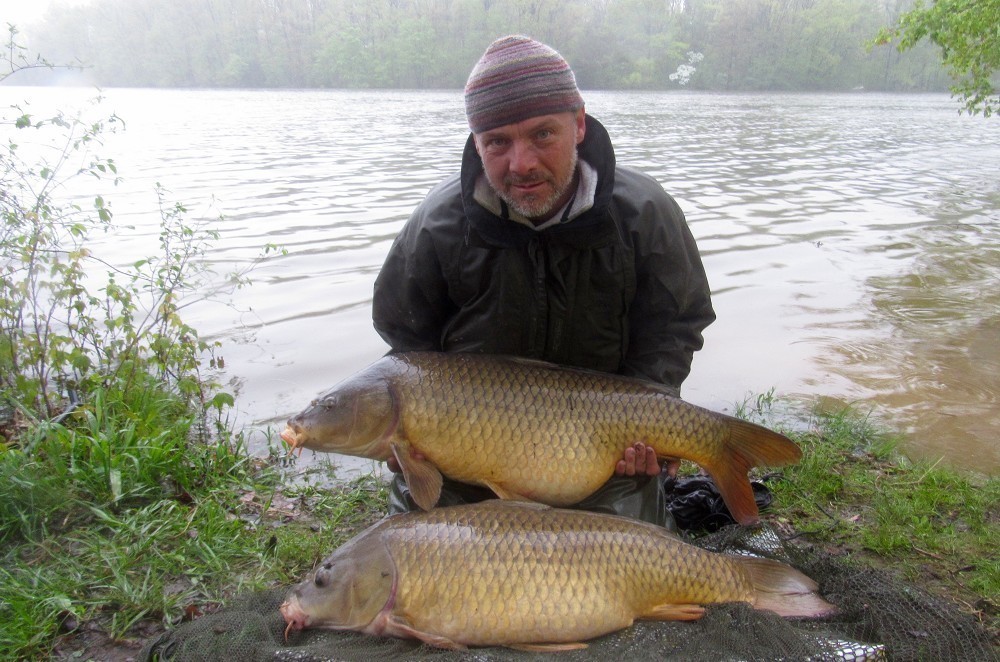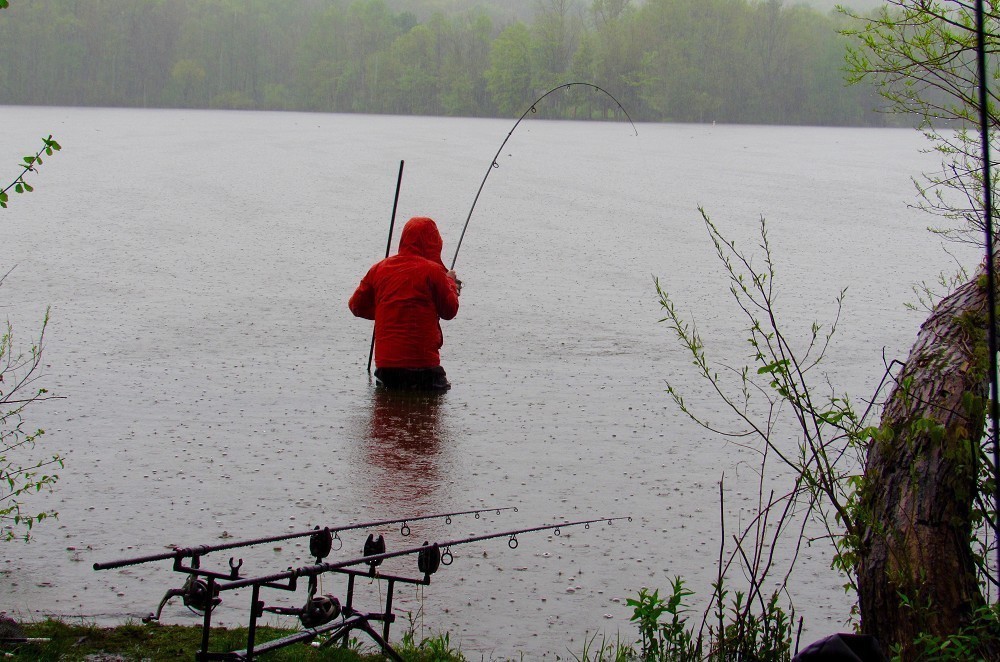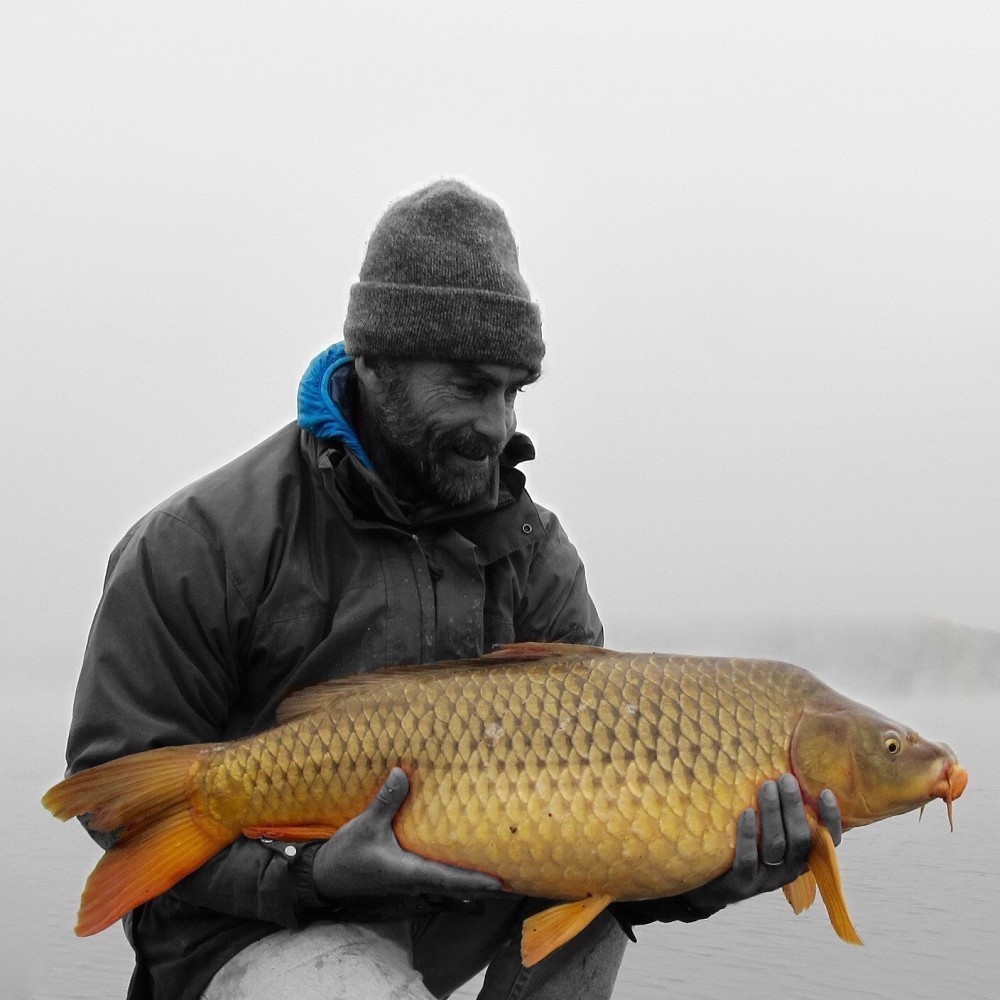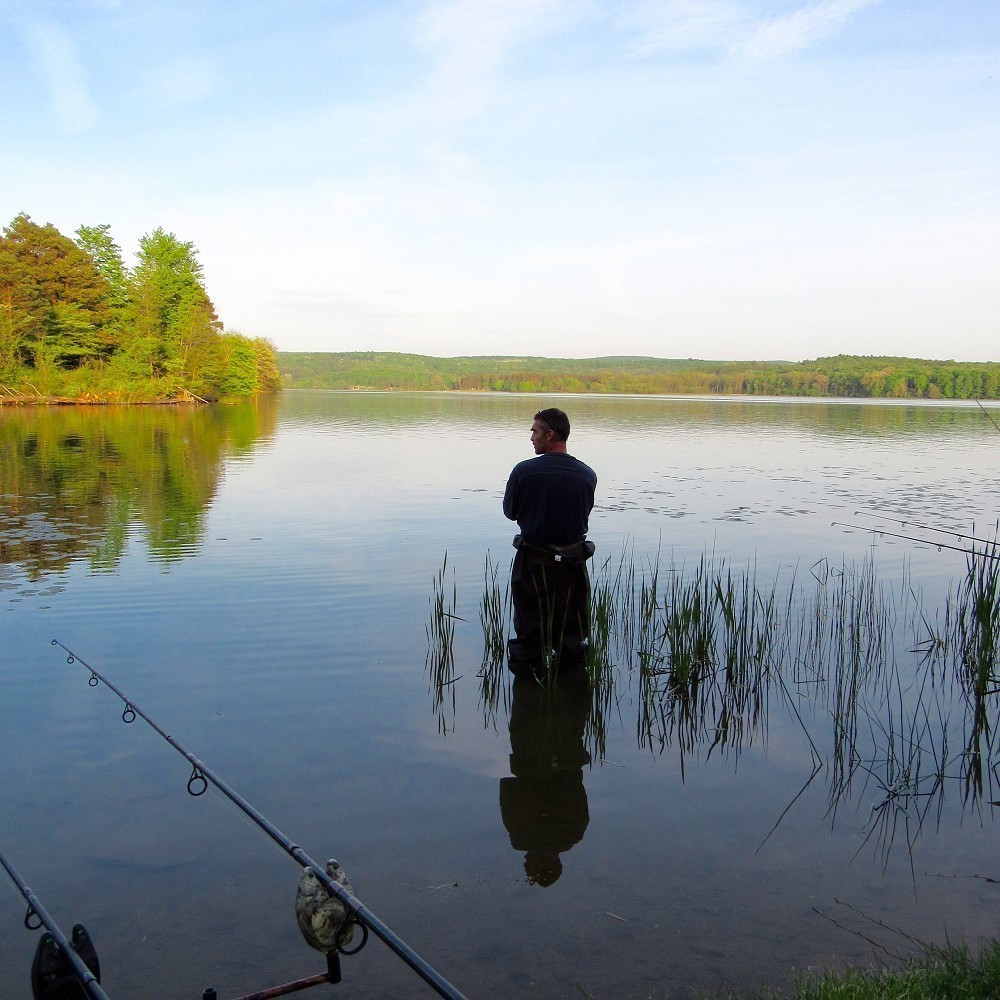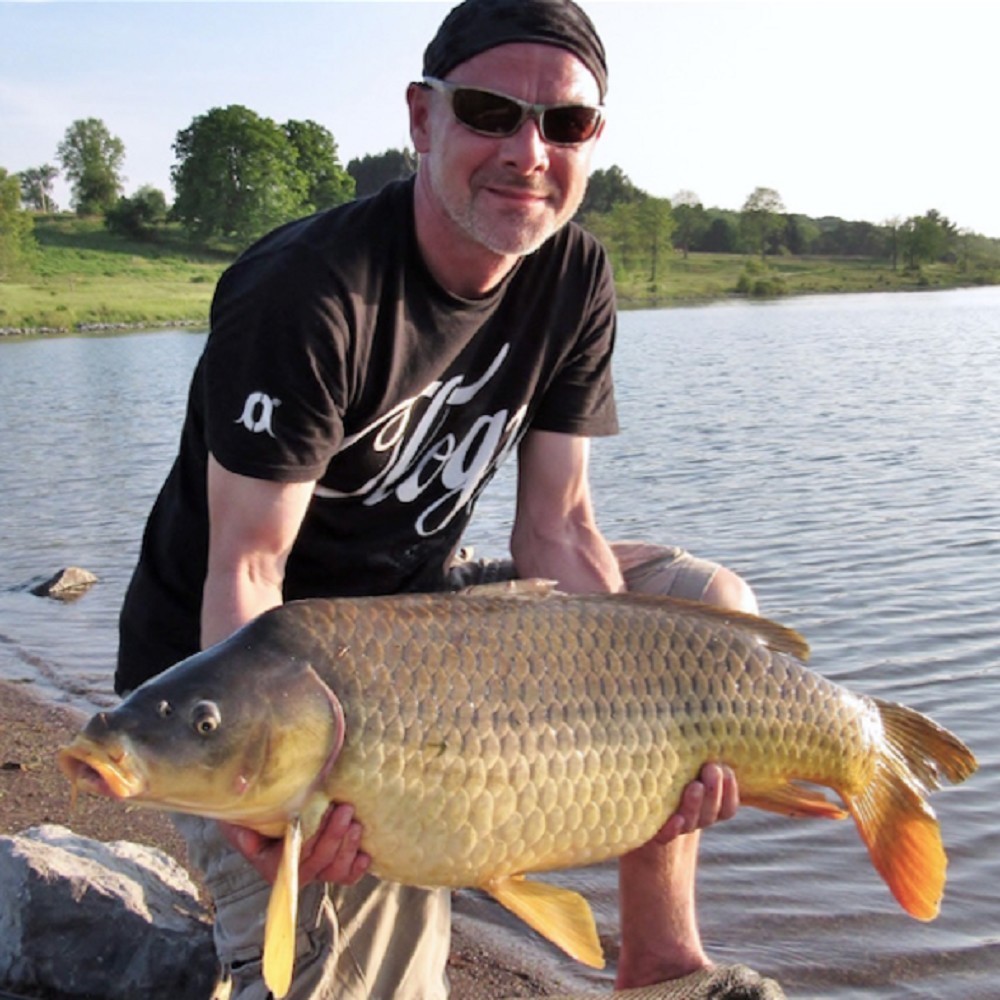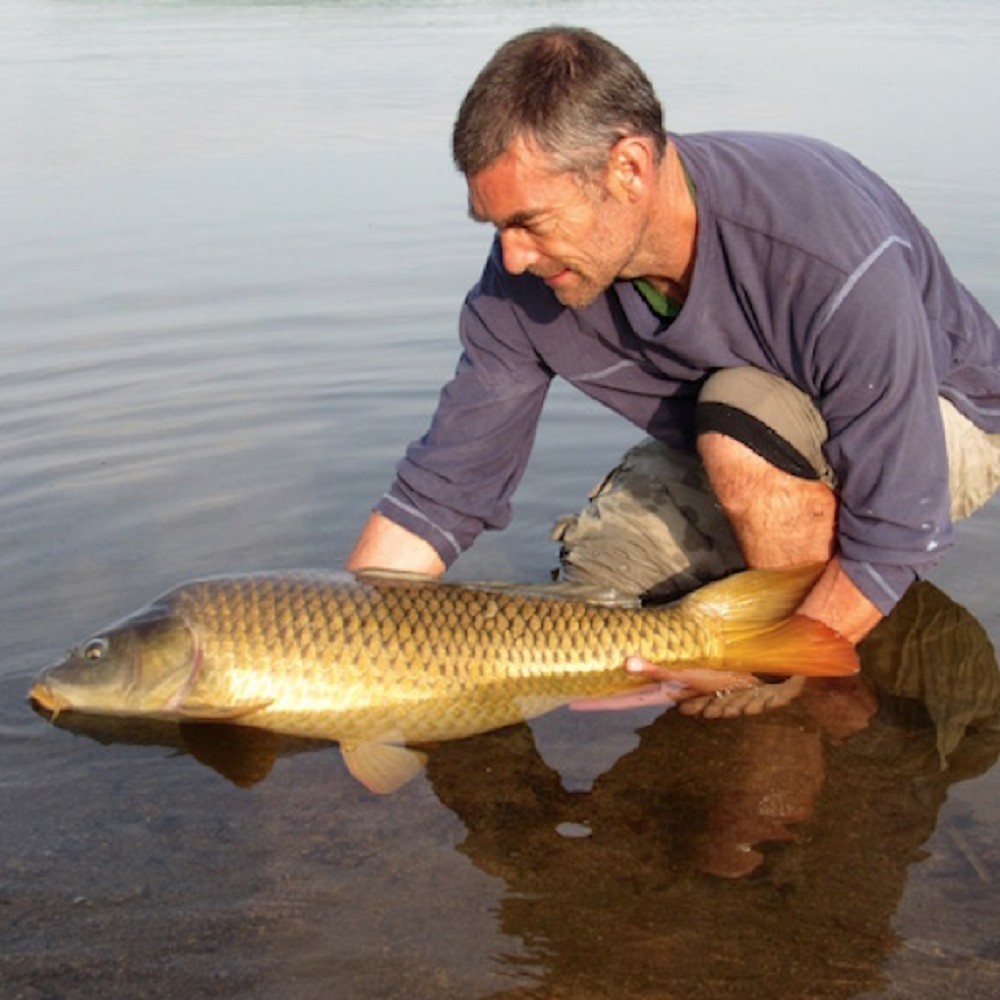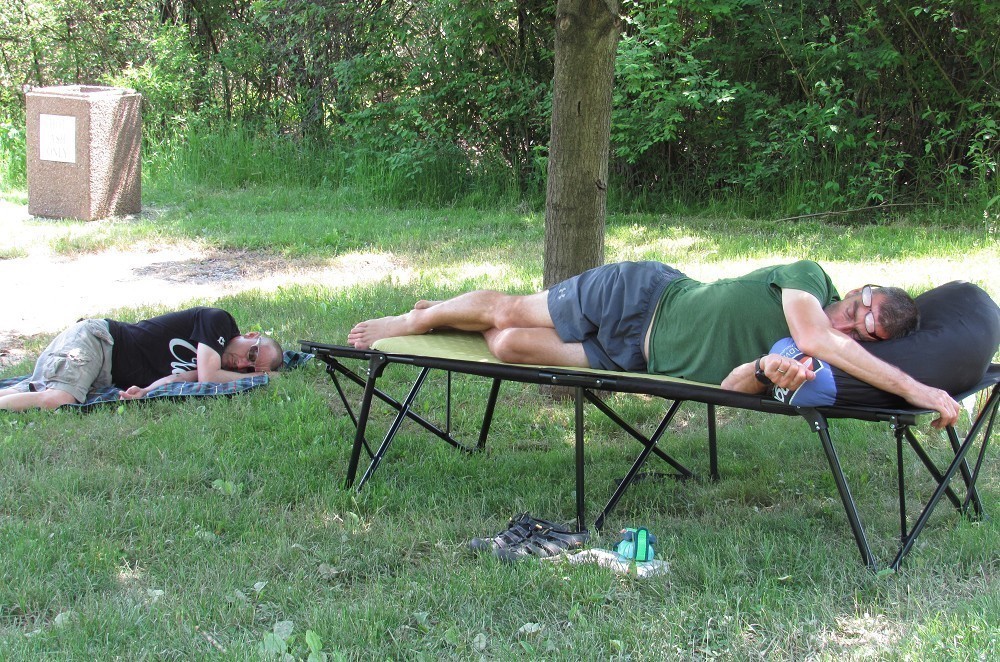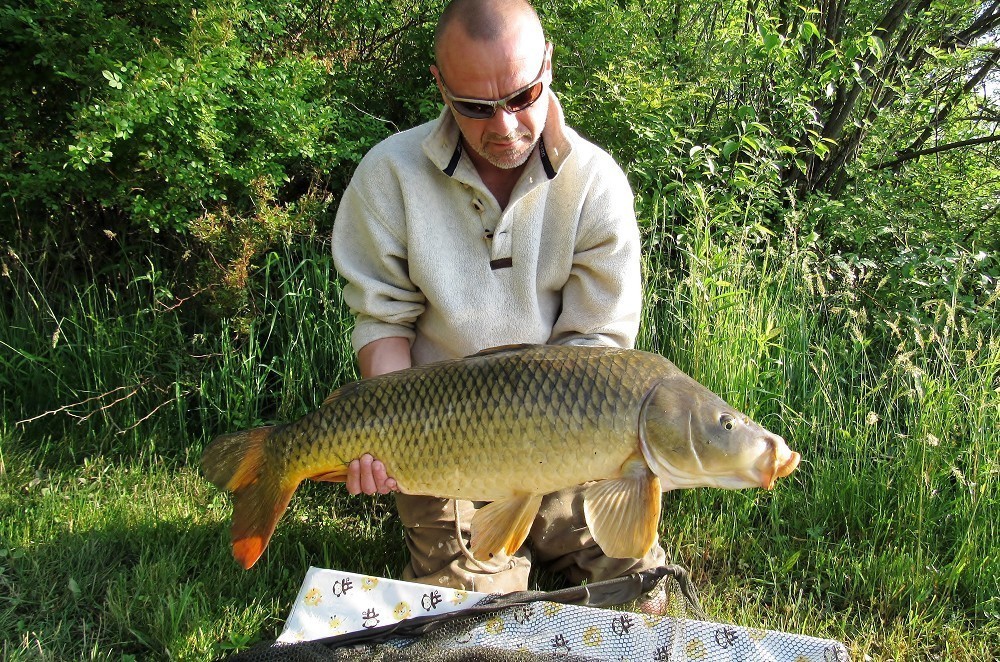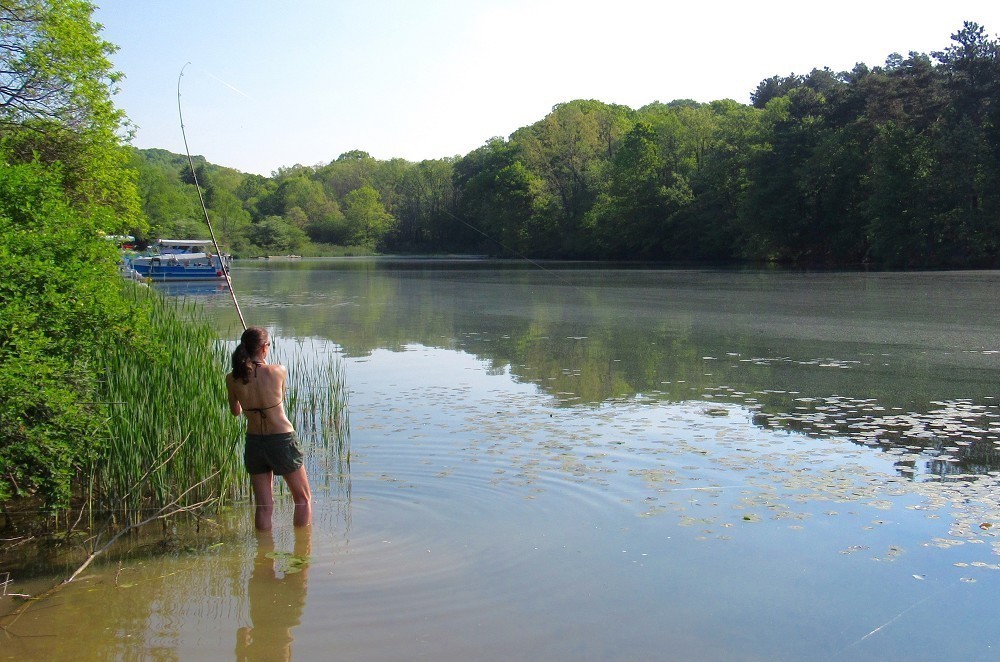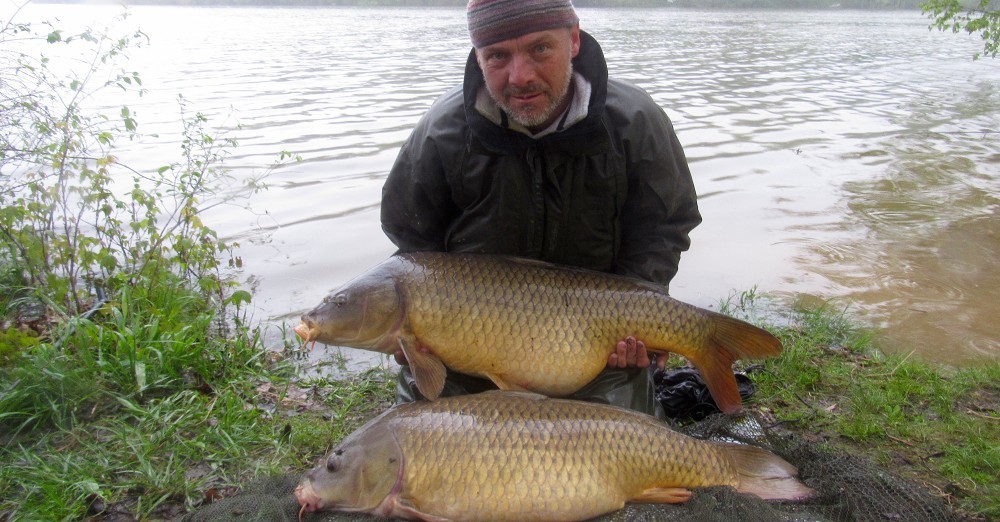
Carp Letter from America - May 2016
Simon Blanford and Andy Bell let us know what they've been up to in May in Carp Letter from America...
So we are here, Spring, full on, no holds barred, budded leafs and screwing birds, growing grass and the first real warmth of the year. E. B. White once wrote, “The first day of the Spring was once the time for taking young virgins into the fields, there in dalliance to set an example in fertility for nature to follow. Now we just set the clocks forward an hour and change the oil in the crankcase.” How true. For carp fishers May can be an uncertain month. Within it there is every chance that carp will feel a certain distraction, a surge of hormonal whatnots deflecting them from their proper, heavenly ordained task of eating fishermen’s baited hooks.
Being the dunderheads we are though, these considerations didn’t even cross our minds when we organised a hurried return to General Pinochet lake scene of Andy’s April successes that included four twenties with one fish closing on thirty pounds. Simon, whose run of fish-less days was becoming irksome, needed little persuasion that a couple of a days next to this lake was urgently needed.
On arrival we were lucky enough to find the same tent pitch Andy had fished from and so, first things first, we got some bait in followed by the rods before we set about putting up tents and sorting out all the other unnecessary gear. Conditions weren’t great for camping. The forecast had gradually deteriorated from sunny patches to grey and overcast followed by heavy rain later in the day and all the next. A stiff wind was already blowing down the length of the lake, harbinger of the rain to come, making camp life difficult and the ground underfoot disintegrate into trench warfare. But the experts say get on the end of the wind and everyone knows that grey, overcast days are much better for fishing than clear, blue skies and plenty of sun. Don’t they.
Andy fished the same swim he had the last time he was here. To his front stretched twenty yards of clear water before a weed bed extended right and left. He dropped some freebies along this fringe of vegetation and followed up with strategically placed hookbaits on the left and right edges and one in the middle. And he was away quickly, first to a double and then, as if to prove the hyperbole he used about last month’s session, he banked a twenty, waved its fat, pre-spawn body in Simon’s face and said “see, I told you so.”
Simon, on the other hand struggled. He was fishing on a point swim. To his right the bank right curved round into the bay Andy was fishing and to his left disappeared into a larger bay with extensive weed covered shallows. There were weed patches dotted around the area Simon could cast at but in no discernible pattern, no large bed to target. He baited a spot out to the left of the swim in the hope that fish cruising from one bay to the other would run into the nice batch of corn he’d laid out; baited another similar spot at the apex of the point with similar intent in mind and sneaked his third rod into the edge of Andy’s productive area. We both picked up a few more fish that day but nothing approaching Andy’s twenty. In the evening with the rain falling more firmly we took the easy option and retired to our tents to be better prepared for the ‘morrow.
The following morning Andy was into fish from the start, a steady procession of singles and low to middle doubles with a couple of fish just shy of the magic mark thrown in for good measure. These fish were a mix of long lean males and fat, almost ready to spawn females. With the mild winter and early Spring we’ve had, their nuptials couldn’t be very far away.
Simon continued to struggle though. Twice he found himself solidly snagged when he tried to reel in and on one run his reward, after tightening to the fish, was the immediate return of a limp, rig-less line. Investigating the swims in his waders he found odd clusters of jumbled rocks dotted around as if someone had pushed a number of wheelbarrow loads of hardcore out into the lake and dumped them willy-nilly. These clumps of rock were in fact, the bedrock poking through the mud and silt of the lakebed. Perfectly natural but their rough edges were devastating for line. To get round the problem he set up his rigs as float-legers to keep the line high and free of the bottom. We’ve use these set-ups before with much success and we don’t have to worry about fish scaring off visible lines or rigs - they are too naive to care.
Still, Simon wasn’t happy with his swim and began to wander round the other tent pitches to see if there was anything more appealing. After a short while he heard a muffled shout from Andy who had responded to a run on one of Simon’s rods and subsequently landed a modest double. Our rule in these situations is that whoever lands the fish, counts it towards their end haul. This might seem odd given all the effort occurs in the baiting up, casting, choice of rigs and hookbait, but there you are. We’ve been doing this since the beginning and aren’t about to change now. Simon should have been forewarned but instead went off for another exploratory wander. This time he heard Andy’s shout more distinctly and hurrying back found him playing what was obviously a good fish. In the net it proved to be a real lump, a fat, unusually pot-bellied fish in comparison to the lean look of most commons we catch here in America. We sacked it in the hope that the driving rain would abate and we might get a few decent pictures. Shortly after we’d sorted ourselves out Andy’s own rod was away and after a dour struggle he landed another lump, an old worn looking fish of similar dimensions to the one in the sack. Realising that the rain would never abate we took the portrait of Andy’s double, the first fish going twenty-seven pounds and the old warrior twenty-five.
Simon knuckled down to the task after this and, rather than relying on his notoriously inept casting, waded his rigs out and delivered them to the spot with an easy underarm lob. This more careful bait placement, tighter baiting pattern and the fact that the line was kept clear of the jumble of rocks on the bottom eventually began to pay dividends and Simon caught fish regularly through the afternoon even as Andy’s swim died a little. None were large though and as the low clouds brought more rain, gusting wind and early darkness we once again made no attempt to stay up through the miserable night.
We had a few hours in the morning before decamping and immediately the rods were in the pattern resumed with fairly constant action to both of us. Again though these fish were all in the low doubles and high singles, with only the last fish of the session hitting seventeen pounds. It was a subdued car containing two damp, tired carpers that headed for home. We had caught a lot of fish but the average size had been lower than many of the other lakes we had fished last year. Where we wondered had the larger doubles and twenties gone?
It was obvious that a number of the females we’d caught on General Pinochet were ready to spawn and would likely do so the next week when conditions warmed. Here in the US spawning must be pretty successful. Almost all carp waters are wild in contrast to a burgeoning number of UK waters that have been artificially created. What’s more, carp aren’t a major target of anglers and so have been left relatively unmolested (bow fishers excepted) for the last 150 odd years. That may well have allowed some local adaptation and increased spawning success. Carp after all have traits that have helped them become colonisers well beyond their native range leading them to be classed amongst the top worst invasive species in the world (yes that’s worst according to the IUCN). They are fractional spawners for example, able to start spawning and then, if conditions become unfavourable, stop, wait and begin spawning again as soon as favourable conditions return. Additionally, everyone knows that female carp are very fecund, one female can hold 74,000 eggs per pound of body weight and a twenty pounder some two million. And to avoid the depredations of the hordes of predators their eggs and young face (even seemingly benign fish like Rudd become more piscivorous in the spring when all those vulnerable little fry hatch) they exploit seasonally flooded wetlands to lay their eggs. These are the places that because they are exposed to the cold, or heat, or have no water covering them for part of the year, contain fewer predators and as a consequence the eggs and little carp survive that much better. UK waters don’t really work like this so even though carp spawn they have to release their eggs into areas that are always covered with water, areas that always harbour a myriad of pathogens and predators just waiting to annihilate all that parental effort. This is one reason why a biologist here estimated that carp are the most populace fish in the inland waters of the USA. What joy.
Our second trip of the month, aside from a short session (on what turned out to be the coldest night of the month) that produced a fat twenty nine-pounder among a handful of other fish on a hectic early morning, was to the Other Lake.
This lake was the jewel in our fishing last year. Not because it turned up the largest fish and not because it turned up the most big fish (though it was close on both counts) but because it had basic cabins for hire right on the waters edge overlooking a beautiful, lily-strewn bay. We’d been looking forward to this first visit of the year and as soon as we arrived Simon had a quick snorkel around and reported that the eel-grass, so thick and prolific later in the year had not yet started to blanket the three to eight feet depth zone. We chose out spots, baited up with the usual seed and corn mix. These freebies were followed up with a corn and Spam hookbaits. Nothing much happened for the first few hours. But even on such a prolific water this was not unusual. On clear, bright days the later morning and most of the afternoon hours had proved to be only minimally productive and this, coupled with the fact that it often took a day or two to build activity in the swims, was a good explanation for the static indicators and silent alarms.
But through the evening and that night our signals of a carp’s interest remained still and silent. What’s more no carp showed, not out in the main body of the lake nor in our own little bay. This was distinctly unusual. No carp to our rods in the first 12 hours - ok, just. No carp showing across the wide view of the lake we commanded from our fishing spot - a tad rum old chap. The following morning Simon had a swim around again and reported back that the baited areas appeared untouched. He then got in the kayak for a scout and headed to an area of extensive weedy shallows on the other side of the lake. Before he even got there he could hear the splashing and crashing deep within the weeds and closer the dorsal, tails and backs of numerous carp were visible. So here was the explanation, one that, in our eagerness to start our season on the Other Lake and despite the evidence we’d had from General Pinochet where many fish were clearly ready to pop, we’d failed to take into account.
We had a conflab. The cabin was booked anyway so there was no real point in packing in. We could set up to fish to the shallows where Simon had seen the spawning but this seemed somewhat indelicate. We could persist and see if we could winkle out any gay fish not participating in the heterosexual shenanigans going on across the other side of the lake (we both glanced at our baits to make sure we had brought the pink pop-ups). Or perhaps we’d nip over to another lake for a night session, a larger, deeper, darker water where the fish might not be so advanced in the reproductive stakes and where this might give us a chance of extracting a couple. Yes, that is what we’d do. So we went. And did it.
The change of venue produced an eight fish haul with six of them being twenties (a fantastic ratio even for this water) topped by fish of twenty-seven and twenty-eight pounds.
Returning to the Other Lake the next morning and having demolished one of Mrs Andy’s heart stopping breakfasts, we lay about and recovered.
Mrs. Simon and Miss Simon 1 and 2 arrived in the early evening and after a meal the Simons pulled out expecting no joy from another night and days efforts. Andy and Mrs. Andy remained for the rest of the booked stay. The following morning, going through the motions as one does but not expecting anything to come of it, Andy cast two rods out into the swims. Soon after, to his immense surprise he was away to a fit, strong twenty.
Thoughts of our earlier conversation about staying to target the gay population crossed his mind. But what the hell, a carp is a carp. Right? And Andy went on to catch another double handful of fish including a second twenty. He was even magnanimous enough to allow Mrs. Andy in on the action.
Even with the hit and miss visit to the Other Lake the start our Spring carping had been very good. Andy in particular had started to rack up an impressive number of good fish, considerably more than we’d had at this stage last season. We have two more sessions booked at this lake in June, a month that can see lake productivity begin to wane and those in the know turning to the big rivers for some action. But we’re not in the know so we’ll be back in a couple of weeks. See what happened next month in Carp Letter from America.





